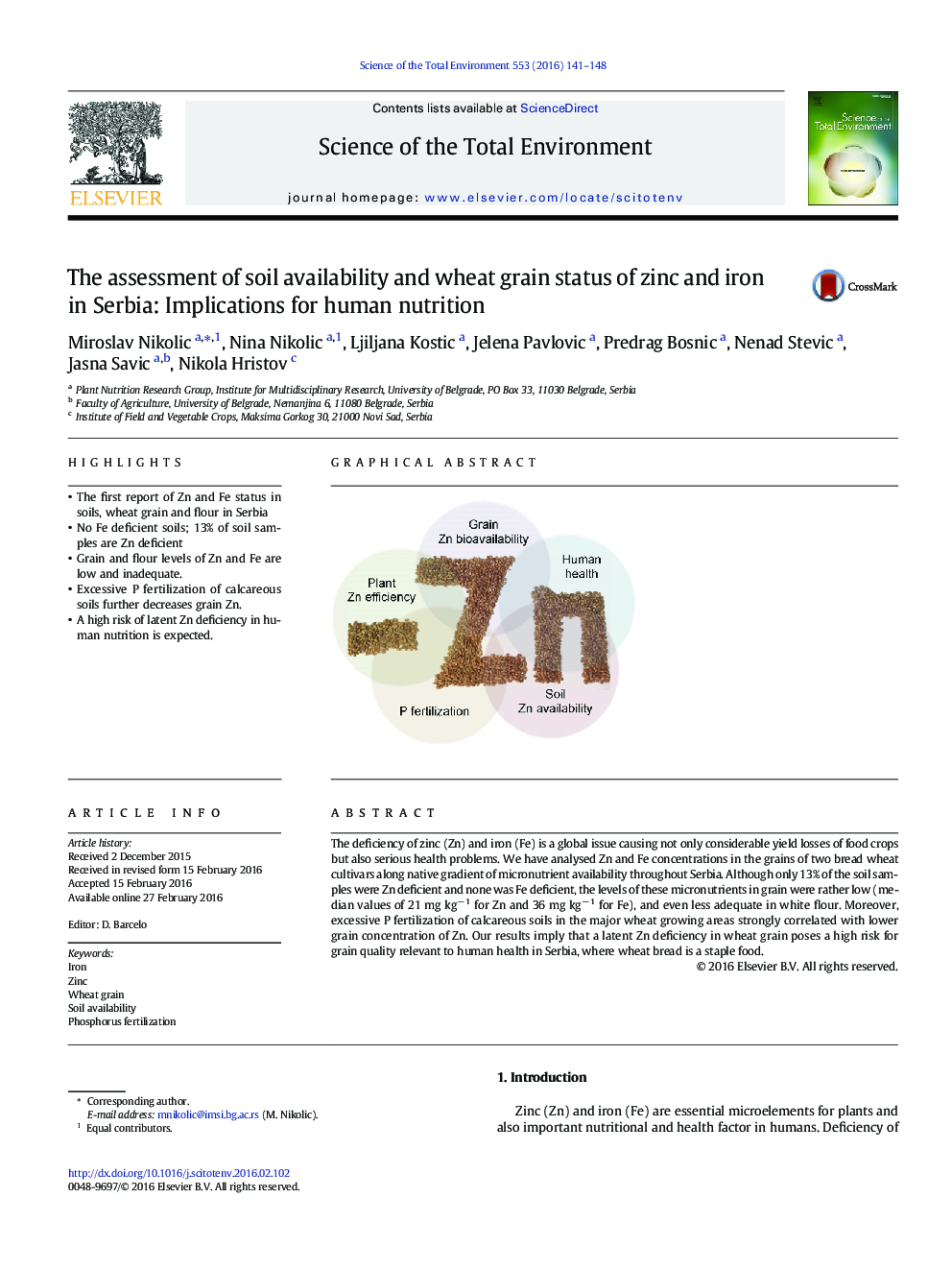| Article ID | Journal | Published Year | Pages | File Type |
|---|---|---|---|---|
| 6322248 | Science of The Total Environment | 2016 | 8 Pages |
â¢The first report of Zn and Fe status in soils, wheat grain and flour in Serbiaâ¢No Fe deficient soils; 13% of soil samples are Zn deficientâ¢Grain and flour levels of Zn and Fe are low and inadequate.â¢Excessive P fertilization of calcareous soils further decreases grain Zn.â¢A high risk of latent Zn deficiency in human nutrition is expected.
The deficiency of zinc (Zn) and iron (Fe) is a global issue causing not only considerable yield losses of food crops but also serious health problems. We have analysed Zn and Fe concentrations in the grains of two bread wheat cultivars along native gradient of micronutrient availability throughout Serbia. Although only 13% of the soil samples were Zn deficient and none was Fe deficient, the levels of these micronutrients in grain were rather low (median values of 21 mg kgâ 1 for Zn and 36 mg kgâ 1 for Fe), and even less adequate in white flour. Moreover, excessive P fertilization of calcareous soils in the major wheat growing areas strongly correlated with lower grain concentration of Zn. Our results imply that a latent Zn deficiency in wheat grain poses a high risk for grain quality relevant to human health in Serbia, where wheat bread is a staple food.
Graphical abstractDownload high-res image (168KB)Download full-size image
